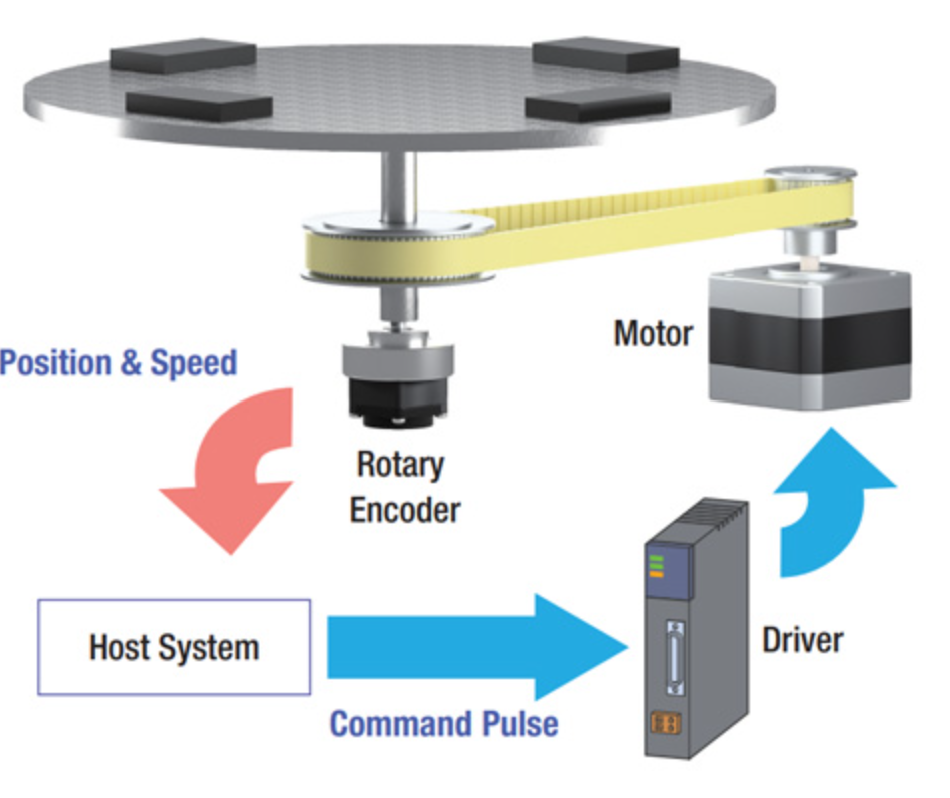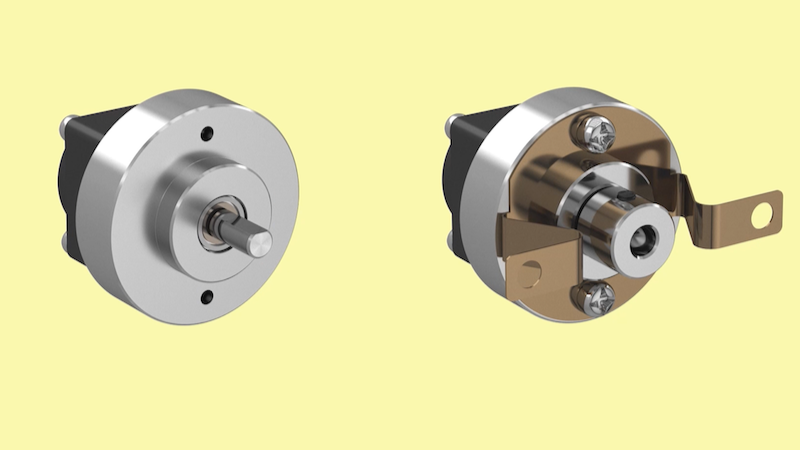Rotary Club: Oriental Motor Announces Several High-Precision Rotary Encoders
Expanding its encoder offerings, Oriental Motor has manufactured four accurate, high-speed rotary encoders to detect belt deflection more quickly.
Oriental Motor, a long-time leader in motor and encoder parts, has released four new incremental rotary encoders. These encoders can produce as many as 2000 pulses per revolution, allowing for a high degree of accuracy in speed and position, all built into an extremely compact form factor. These encoders are offered at an affordable price point ($114) and will likely see service in speed and position verification in robotic motion control.
Purposes of a Rotary Encoder
Rotary encoders serve multiple purposes in automation systems. Perhaps the most common purpose is to verify motion in a feedback loop. In this situation, a drive motor turns to precisely align a component, such as a mechanical arm, or drive a belt on an assembly line. While the motor may think it moved a certain distance, an encoder can verify this measurement. For example, belt stretching, deflection, or breakage can cause a discrepancy between the expected and actual motion in a belt-driven system. With a rotary encoder, this problem can be quickly identified.

Using a rotary encoder to verify position and speed. Image used courtesy of Oriental Motor
To use the encoder, the motor control signal and the encoder output signal are compared. They should match in some manner, depending on gear and pulley ratios. If the belt begins to slip, stretch, break, or deflect too much, the number of pulses will no longer match, which can prompt an error code, depending on the severity of the situation.
Features of the High-Resolution Rotary Encoder
Oriental Motor has added four new encoders to its catalog. These encoders are divided into two categories: 1000 pulses per revolution and 2000 pulses per revolution. The more pulses per revolution, the more steps; the more steps, the higher the resolution of the encoder. With 1000 pulses per revolution, the motor can detect angular changes of 0.36°, and 2000 pulses per revolution can detect angular changes of 0.18°.
Both encoder resolutions are available in round shaft or hollow shaft models. Round shaft models are typically used when higher load is required. In contrast, the hollow shaft models are more suitable for compact installations and applications where lighter weight (and lower rotational inertia) are required.

The solid shaft and hollow shaft high-resolution rotary encoders. Image used courtesy of Oriental Motor
These encoders are compact, weighing as little as 33 g, and measure only 30 x 30 x 34 mm, with only a few output wiring pins. The compact size and simple wiring mean these encoders can be quickly integrated into many existing systems and will not impact the size of new automation systems.
Applications
The key advantage of these encoders is their ability to sense very small changes. This high level of accuracy will help predict belt failures and over-deflections much earlier, saving on downtime. Instead of waiting for a belt to fail, belt life can be predicted, and worn belts can be replaced during preventative maintenance routines instead. Overall, these precision encoders can potentially have a very short return on investment (ROI), quickly paying for themselves in reduced downtime and unnecessary belt changes.

 Facebook
Facebook Google
Google GitHub
GitHub Linkedin
Linkedin








